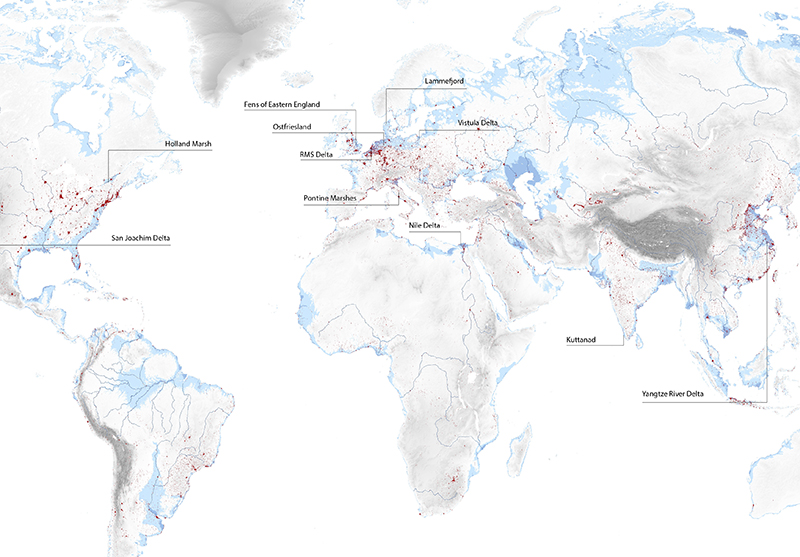Polders can be found in coastal and alluvial lowlands all over the world. In these reclaimed areas water levels are artificially controlled so people can live and work there. This often centuries-old interaction between man and water has produced a rich variety of polder landscapes. These landscapes are now under threat due to climate and economic change: increasing risk of floods due to rising sea levels, ongoing subsidence due to intensive drainage and rapid urbanization. Action is needed to manage and guide these and other detrimental developments. These valuable cultural heritage landscapes must be safeguarded through knowledge development aimed at providing pointers for preservation and transformation.
Though there are many studies on the polder as a hydraulic or historical phenomenon, there are hardly any that address polders as spatial constructions and cultural expressions: the polder landscape as it is perceived and experienced, and also as a reflection of culture. To fill this gap the Landscape Architecture section at Delft University of Technology (Netherlands) initiated a long-term research programme focusing on the landscape architecture of the polder. This programme aims to expand our knowledge about and raise awareness of these flood-prone lowland cultural landscapes and their problematic condition of intensive cultivation and habitation, while providing reference points for policy making, planning and design from a landscape architecture perspective. The research addresses polder landscapes as cultural expressions – rather than as mere feats of water engineering – employing mapping, case studies and comparative research as means to understanding the similarities and differences between these polder landscapes.

Polder and irrigation landscapes of the world. Indicated are some important low land regions (image: S. Nijhuis, TU Delft)
Further reading
To download:- Nijhuis, S, Schultz, B & Pouderoijen, MT (2018) Polder landscapes of the world. Amsterdam: Jap Sam Books (forthcoming)
- Nijhuis, S (2016) Polderscapes. The landscape architecture of the Dutch lowlands. Journal of Landscape Architecture China 风景园林 7; 38-57. http://dx.doi.org/10.14085/j.fjyl.2016.08.0038.20
- Nijhuis, S & Pouderoijen, MT (2013) De polderkaart van Nederland. Een instrument voor de ontwikkeling van het laagland. Bulletin KNOB 3; 137-151. http://dx.doi.org/10.7480/knob.112.2013.3.62
- Steenbergen, CM, Reh, W, Nijhuis, S & Pouderoijen, MT (2009) The Polder Atlas of the Netherlands. Pantheon of the Low Lands. Bussum: uitgeverij Thoth (ISBN 978-9-06868-519-0)